With babies, even a trip to the playground can involve a lot of gear. When you want to go hiking with a baby though, the list of gear to bring can get really long. However, I’ve found that you can still keep things minimal (i.e. not lug around tons of stuff!) by making smart choices about what baby gear to bring on the hike. This list goes over the essential baby hiking gear that will make the experience safer and more enjoyable.
1. Baby Carrier or Stroller
This is the most essential piece of baby hiking gear. For hikes on rugged terrain, you’ll need to use a baby carrier. Front carriers are good for infants, albeit a bit sweaty. Backpack carriers are good for older babies and allows them to enjoy the view more.
There’s nothing wrong with using a stroller on hikes either. It’s becoming easier to find accessible trails and there’s a good selection of off-road strollers that can handle bumps. I definitely prefer the stroller on longer hikes: it saves my back from the strain of carrying my heavy baby and is less-sweaty on hot days.
Random tip: I sometimes brought a stroller and a carrier when hiking with my baby. I’d use the stroller for as long as possible. When the trail got too tough, I’d use a bike lock to lock the stroller ot a tree and continue with the carrier. This obviously only works if you hike out the same way you came though.
For more info, read:
- Strollers vs. Carriers for Hiking
- Tips for Using a Baby Hiking Carrier
- Best All-Terrain Strollers for Hiking
- Best Hiking Carriers for Petite Women
2. Trekking Poles
If you are using a baby carrier on your hike, absolutely bring trekking poles. They improve balance, which reduces the likelihood that you might fall and have an injury. Trekking poles also help distribute the load throughout your entire body, meaning that your back takes less strain.
3. Diaper Kit
My hiking diaper kit contains the same items in the one that I carry every day: diapers, wipes, barrier cream and hand sanitizer.
The difference is that the hiking diaper kit is smaller. Instead carrying around an entire package of wipes, I will repackage a few into a baggie. I also make sure to use scent-free cream whenever in nature so it doesn’t attract insects.
Tip: Make sure you keep all the diaper items together in a pouch or baggie. You don’t want to dig multiple items out of the pack each time you have to do a diaper change.
4. Pack-Out Bag
Yes, you will have to pack out dirty diapers, wipes and any other trash. A doubled plastic shopping bag works fine. If you use cloth diapers or simply don’t want to toss plastic bags into the trash, then you can get a waterproof diaper bag. They are bulkier but definitely better for the environment.
I like this reusable diaper bag. It comes with various sizes and the smaller size is perfect for hiking. There are two compartments so you can keep diapers in one and trash in another. There’s also a hook so you can attach the diaper bag to the outside of your pack.
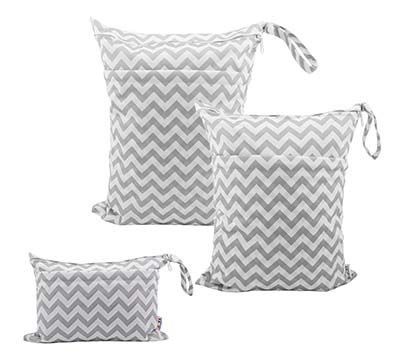
Alvababy waterproof diaper bag – get it here
5. Mat or Blanket
I bring a lightweight foam sleeping pad on hikes with my baby. It serves multiple functions:
- Diaper changing pad
- Can put your baby down on it during breaks
- Someplace to sit while breastfeeding so your butt doesn’t get cold/dirty/wet from sitting on the ground
You can also bring a blanket (preferably one which has a waterproof underside). However, I find mats easier to open/close. They also provide more insulation, which is important if you are going hiking with a baby in cool or wet weather.
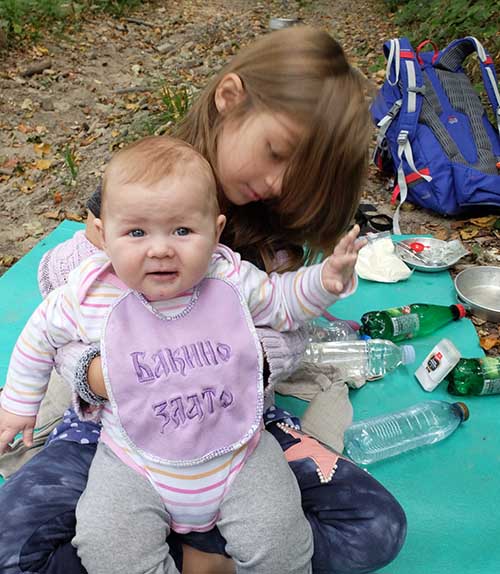
My girls hanging out on a foam mat during our hiking lunch break
6. First Aid Kit
In addition to these items in my hiking first aid kit, I also bring little ampules of saline solution. Why? My baby loves to grab things like handfuls of dirt or crumbly fall leaves. Touching things is great for sensory stimulation – but she also has a tendency to touch her eyes with dirty hands. The saline solution is very helpful for rinsing the dirt out of her eyes.
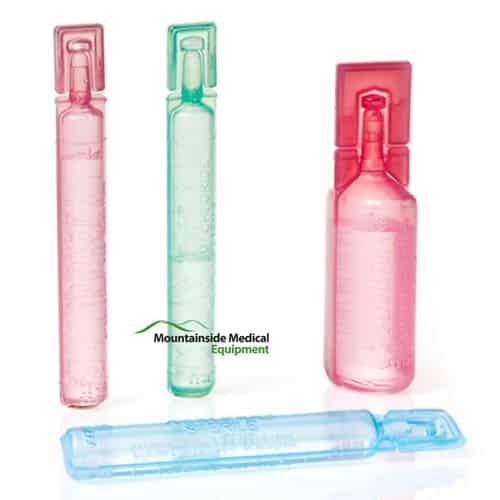
You can get these ampules here
7. Clothing
Your baby will need to dress like you do while on the hike: in lightweight breathable layers. The difference is that your baby will not be moving around much, so will need more layers (or thicker layers) to stay warm in cool weather.
If your baby is in a front carrier, keep in mind that she might get sweaty. Or you will get sweaty and transfer the wetness to your baby. For this reason, it’s important that your baby wears clothes which can dry quickly.
I also bring one complete change of clothes for my baby while hiking. You never know when a diaper blowout or major spit-up incident will occur.
8. Weather Protection
Depending on when and where you go hiking with a baby, you will need gear for sun, rain, or cold weather. This make include:
- Sun: UV clothing, baby-friendly sunscreen, sunhat, sunglasses, shade cover for hiking carrier or stroller
- Rain: Baby rain suit, rain cover for carrier/stroller. *See these top picks for best baby rain suits
- Cold: Booties, mittens and hat which can be tied on, good base layer, snowsuit, chemical hand warmers. Read these tips for hiking with a baby in cold weather.
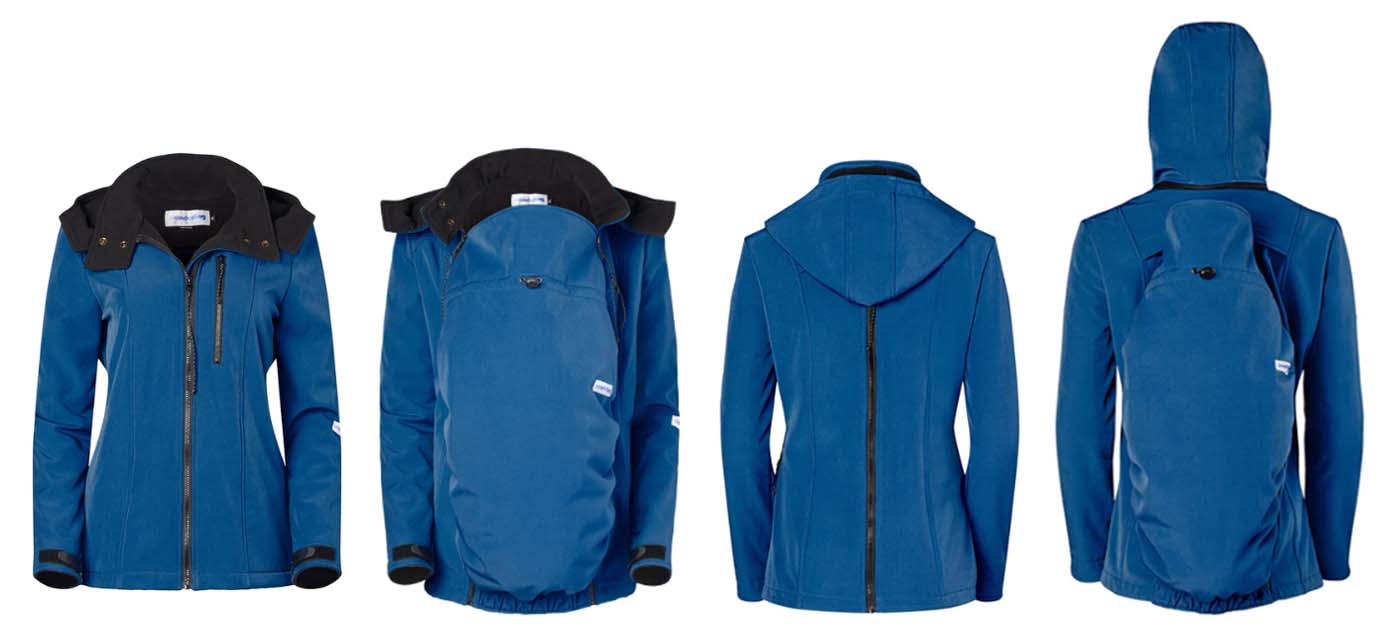
It’s pricy, but this babywearing jacket by Wanderling (shown above) is awesome. It lets you carry your baby underneath your jacket so you can keep them warm and dry. Check it out here (and use discount code MGC10 for 10% off at checkout)
9. Animal and/or Insect Protection
In most areas, your biggest threats while hiking with a baby are going to be mosquitoes and ticks. Some areas have problematic bears and you’ll need to carry bear spray.
While mosquitoes are mostly a nuisance (and your baby might keep you awake for days after the hike fussing because of itchiness!), ticks can be very dangerous. I’ve pulled multiple ticks off my baby after hikes. Luckily she never got Lyme disease, probably because I’m so diligent about checking and always keep a tick-removal tool in my first aid kit so I can remove them properly.
For more info, read:
10. Clips/Gear Ties
If you are going to bring a baby bottle, pacifier or toy on the hike, then you will want to get some clips. Otherwise, the bottle will inevitable fall on the ground and you’ll have to lick the dirt off while telling yourself “Dirt is good for immunity, right?”
Carabiners works well for clipping some baby gear to your pack. However, my favorite trick is to use an adjustable loop knot (like a tautline hitch, clinch knot or slippery 8 loop) to tie gear to the carrier or stroller. This means that my baby can grab her own bottle so I don’t have to constantly hand it to her. And I don’t have to worry that she will chuck it on the ground.
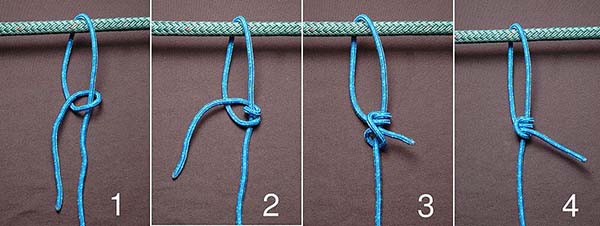
Tautline hitch knot. Tie one side to the pack/stroller and then tie the other end of the rope around the bottle/toy/item. The knot slides so you can easily remove the item.
I use this trick in our everyday life too. You know how babies go through phases where they throw things on the ground and expect the parent to pick them up? My baby couldn’t do that because her bottle was always attached to the high chair or stroller!
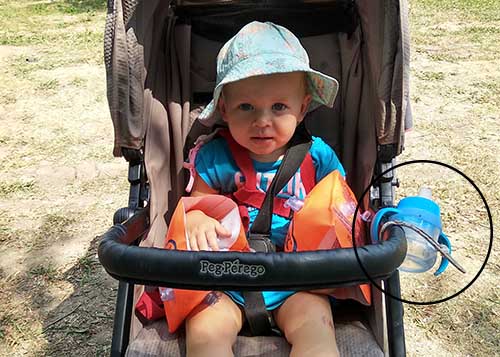
Never drop a bottle! My daughter’s bottle is tied onto her stroller with a tautline hitch. The rope is long enough for her to drink from the bottle but not long enough for it to fall to the ground.
11. Survival Gear
No matter how experienced of a hiker you are, bad things can happen. For this reason, prepared hikers will always make sure to carry basic survival gear with them. When hiking with a baby, this gear should include:
- Headlamp
- Lighter and some tinder (plus knowledge of ways to make a fire)
- Water purifier
- Extra water and snacks
- Emergency communication Device (my family uses the SPOT Finder)
To make sure you are prepared, read this list of things you should ALWAYS bring with you on hikes.
What baby hiking gear do you bring on the trail? Let us know in the comments below.
Need more advice? Read this Guide to Hiking with a Baby
Image credit: “Woman Hiking with Baby in Arastradero Pr” (CC BY 2.0) by donjd2,
TautlineHitch-ABOK-1800.jpg, by David J. Fred, Creative Commons Attribution-Share Alike 2.5 Generic


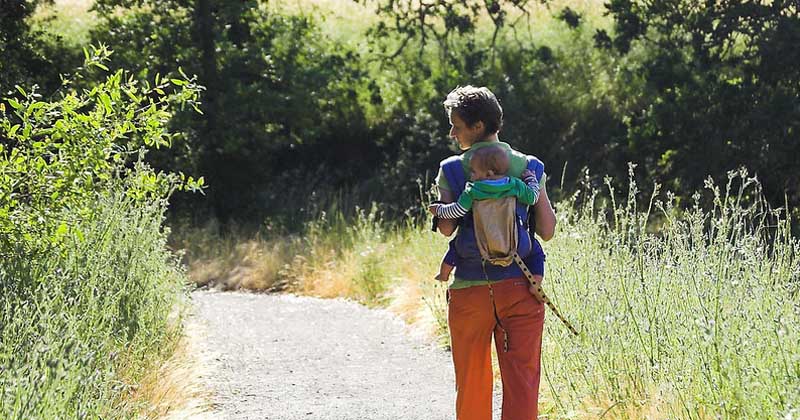
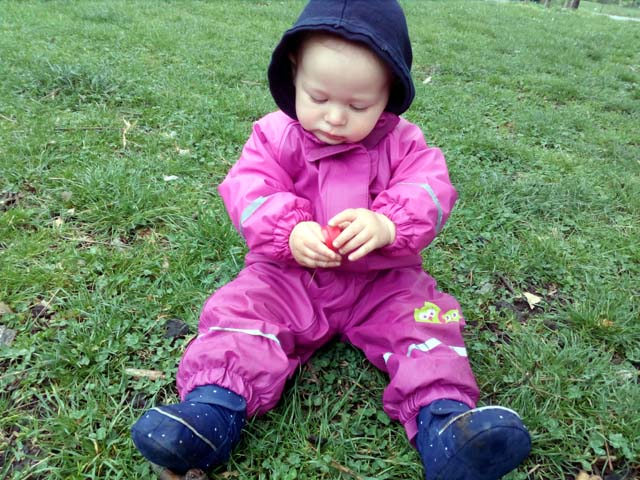
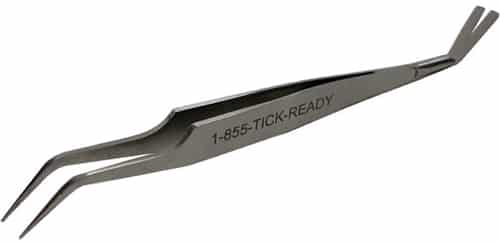
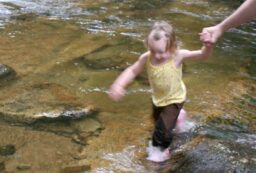
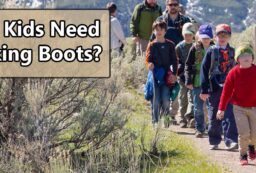
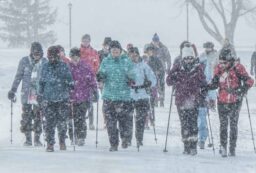







Post your comments